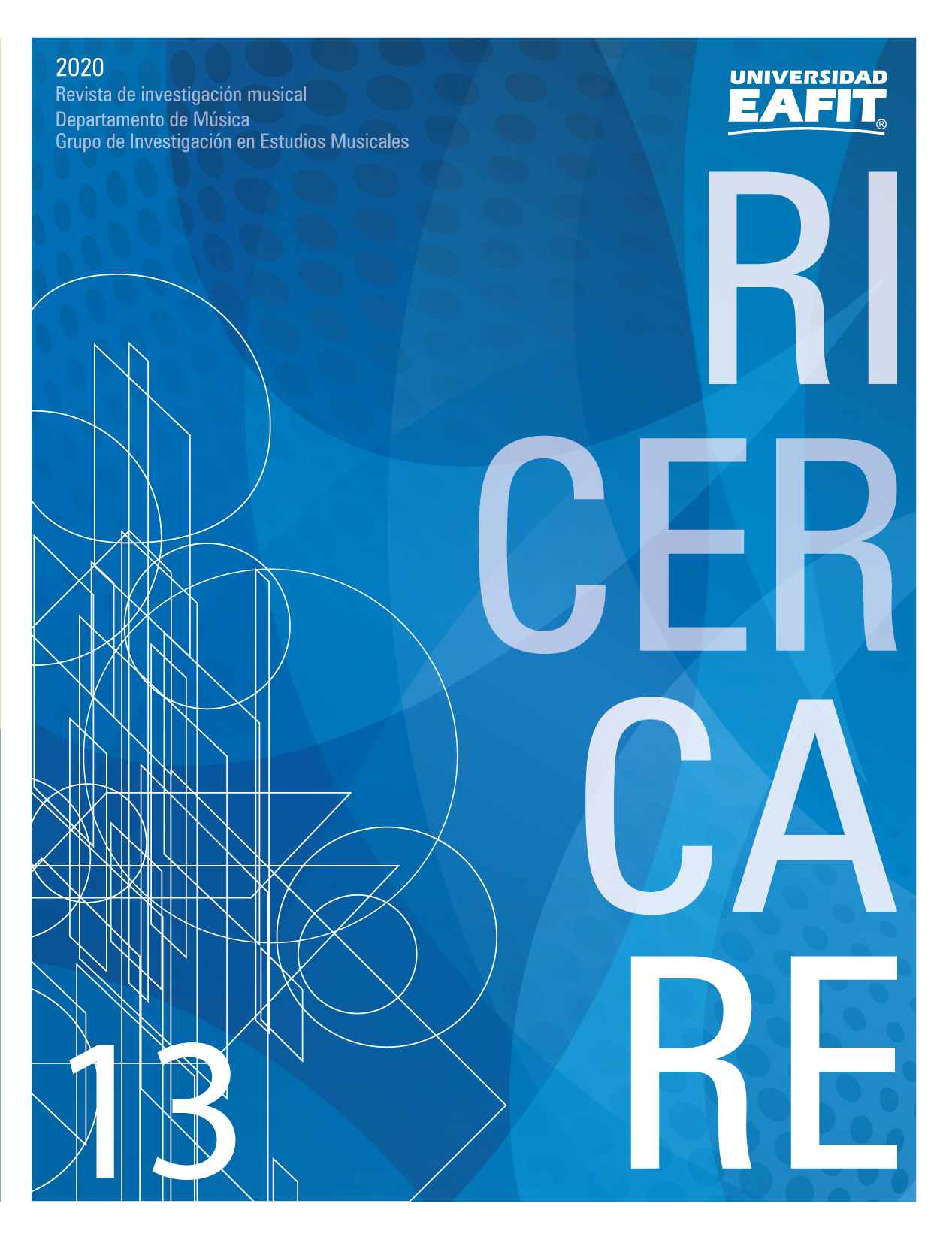Un análisis de Speakings de Jonathan Harvey para orquesta y electrónica
Main Article Content
Keywords
electroacústica, orquesta, percepción, música y lenguaje, fonética
Resumen
En años recientes, hubo un gran número de compositores que ha utilizado el habla como fuente para la composición de obras instrumentales, electrónicas y electroacústicas. Este artículo examina la particular intersección entre música y lenguaje a través del análisis de la obra Speakings de Jonathan Harvey para orquesta y electrónica. Analizando las técnicas compositivas de Harvey y el uso que hace de la tecnología, en particular como ambos se relacionan con teorías existentes de la percepción del habla, del acústica y de la fonética articulatoria, se intenta entender como el compositor consiguió que un sonido orquestal sonara como la voz humana. Este logro técnico es finalmente puesto en un contexto musical más amplio para examinar el rol que el sonido del habla juega en esta pieza y las implicaciones que conlleva escuchar una orquesta hablar en relación con la narrativa de este trabajo.
Descargas
Referencias
Analogues of Certain Speech Sounds. Haskins Laboratories Status Report on Speech Research SR-51/52.
Blumstein, S. E., & Stevens, K. N. (1981). The search for invariant acoustic correlates
of phonetic features. Perspectives on the Study of Speech, 1-38.
Cochard, A. (2008). Jonathan Harvey, Arshia Cont et Gilbert Nouno present Speakings
at l’Ircam [Video file]. Retrieved November 13, 2020, from https://www.youtube.com/
watch?v=wjFz-tfCoPk&ab_channel=duduchier.
Harvey, J. (1981). “Mortuos Plango, Vivos Voco”: A Realization at IRCAM.
Computer Music Journal, 5(4), 22-24. doi:10.2307/3679502.
Harvey, J. (1999). In quest of spirit: Thoughts on music. Berkeley, CA: University of
California Press.
Fineberg, J. (2000). Guide to the Basic Concepts and Techniques of Spectral Music. Contemporary Music Review, 19:2, 81-113. doi: 10.1080/07494460000640271.
Harvey, J. (1999) The metaphysics of live electronics. Contemporary Music Review,
18:3, 79-82. doi: 10.1080/07494469900640351.
Harvey, J. (2008) Speakings for Orchestra and Electronics. London: Faber Music.
House, A., Stevens, K., Sandel, T., &; Arnold, J. B. (1962). On the learning of
speechlike vocabularies. Journal of Verbal Learning and Verbal Behavior, 1(2), 133-143. doi:10.1016/s0022-5371(62)80010-3.
Jones, D. (1987) Compositional Control of Phonetic/Nonphonetic Perception.
Perspectives of New Music, 25(1/2), 138-155.
Ladefoged, P. (2006). A course in phonetics. Boston, MA: Thomson Wadsworth.
Ladefoged, P. (2010). Vowels and consonants: An introduction to the sounds of
languages. Malden, MA: Blackwell.
Lisker, L. (1985). The pursuit of invariance in speech signals. The Journal of the
Acoustical Society of America, 77(3), 1199-1202. doi:10.1121/1.392185.
Nouno, G., Cont, A., G. C., & J. H. (2009) Making an Orchestra Speak. Proceedings of
the Sound and Music Computing Conference, 277-282.
Samuel, A. G., &; Tartter, V. C. (1986). Acoustic-Phonetic Issues in Speech Perception. Annual Review of Anthropology, 15(1), 247-273. doi:10.1146/annurev.an.15.100186.001335.
Schnell, Norbert, and Schwarz, Diemo. (2005) Gabor, Multi-Representational Real-
Time Analysis/Synthesis. Proc. of the 8th Int. Conference on Digital Audio Effects.
Smalley, D. (1997). Spectromorphology: Explaining sound-shapes. Organised Sound, 2(2), 107-126. doi:10.1017/s1355771897009059.
Stevens, K. N., & Blumstein, S. E. (1979). Acoustic invariance in speech production:
Evidence from measurements of the spectral characteristics of stop consonants. The
Journal of the Acoustical Society of America, 66(4), 1001-1017.
Wishart, T. (1996) On Sonic Art. Amsterdam: Harwood Academic Publishers.

